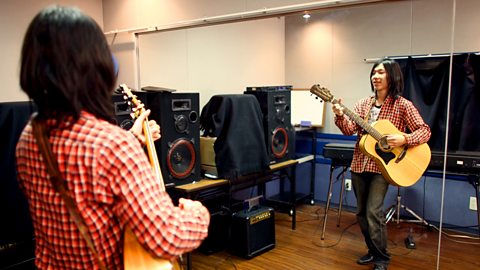Evaluating a performance
Choose a piece, or a section from a piece, that you are learning and organise a date to perform it to:
- your teacher
- your best friend(s)
- your family
Doing this will help you get used to performing in public before the final exam.
Collect feedback about your performance. Find out what the audience thought about your playing. This may highlight positives and negatives that you might not have thought of yourself.
Another way to self-reflect is to record audio/video of your performance using a mobile phone, tablet or video camera. Watch the footage or listen back to the audio in order to evaluate how you dealt with the following aspects:
How was your posture?
- were you standing up straight?
- how were you holding the instrument?
- could you see your face or was it hidden by the music stand?
- did you show any expression on your face?
- if you played a wrong note did you show it on your face?
- did you look like a confident musician?
What did you sound like?
- was the performance convincing?
- did the music flow or did it stutter and stop?
- were the notes in tune?
- were the rhythms correct?
- were there any dynamics?
- was the piece at the correct tempo?
- would you mark yourself as a pass?
Use the SQA mark sheet to grade your performance and set targets to improve upon.
Using the recording, choose three areas to work on and set a target date to make a second recording of the same piece(s).
If you write down your targets in your booklet and/or your practice log you will be able to see if you have achieved them during the second performance.

Practicing in front of a large mirror is another good technique to see how your playing is developing. This will allow you to see what you look like as you play and will help you to correct problems with your posture and any technical aspect of your playing.